History and culture of Lake Garda
The entire area around Lake Garda has been marked over time by numerous important historical events, traces of which can still be found. Many of these places are open to the public and can be visited individually, while others are only accessible through excursions which are organized to discover the history and culture of Lake Garda.
We are increasingly being asked to organize tailor-made cultural routes for schools, associations, companies, but also for enthusiasts. This is absolutely possible because we are a local tour operator. This type of custom program is ideal for those who would like to discover specific periods of past or have special interests and need to schedule it in a specific time.
The Bronze Age
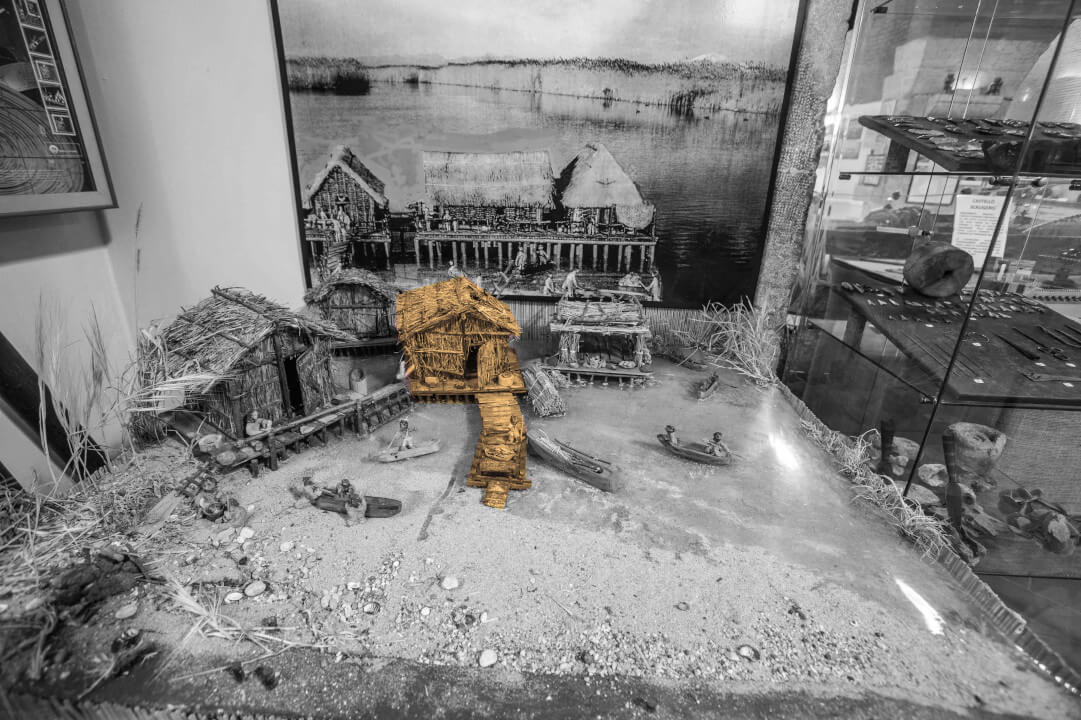
Lake Garda has been inhabited since the Bronze Age, as evidenced by the petroglyphs found in the area, which have been dated to around 1500 BC. In particular, a large number of petroglyphs are visible on the Veronese Coast, between Garda and Malcesine. In the Municipality of Torri del Benaco, in the Brancolino district, we can find the two of the most famous, named: "Pietra delle Griselle" and "Pietra dei Cavalieri". Inside the Museum of the Scaliger Castle in Torri del Benaco you can find a dedicated room.
Other evidence of the ancient civilizations that settled in the Garda area between the Neolithic and the Bronze Age are the remains of pre-Alpine pile-dwelling villages. Most have been found on the southern shore of Lake Garda: the site of the Lavagnone di Desenzano and the Frassino lake in Peschiera.
These pile-dwelling sites have been both included, along with those of the rest of the Alps, in the UNESCO World Heritage List.
Many of the remains are still submerged, but faithful reconstructions and relics collected during the researches are kept at the Natural History Museum of Verona. To find out more about the ancient history of the lake there is a museum in Bardolino and the museum of fishing and lake traditions in Peschiera del Garda.
A journey through history and culture for an authentic experience in the most beautiful places to visit on Lake Garda
Roman period
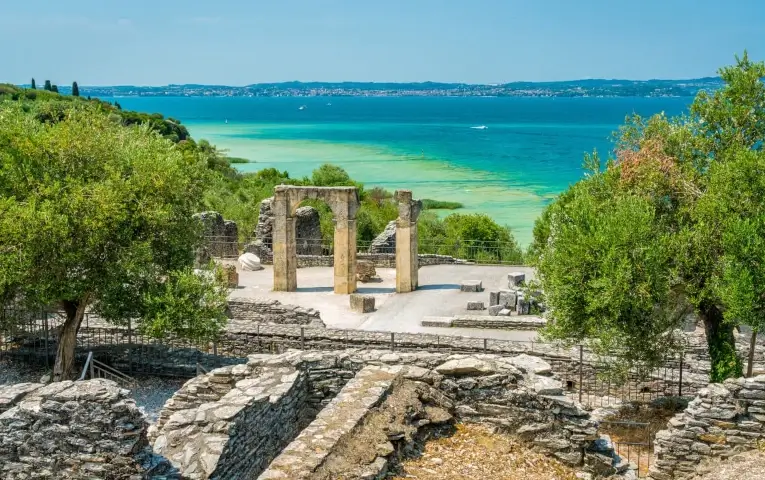
Credits: Stefano Valeri
The city of Verona has many traces of the Roman era, and after Rome, it is one of the Italian cities with more visible artifacts. First of all, the symbol of the city, the Arena, an amphitheater built in the 1st century AD. for gladiator fights. The arena can be visited and is still in use during the summer for opera season and hosts major concerts. During the Roman Empire, Verona was already of great importance, being at the crossroads of via Postumia, Gallica and Augusta. To admire this open-air museum, you can just stroll around along the cobbled streets, the Gavi arch and Porta Leoni. Near the Roman Theater, in the Archaeological Museum, there are many artifacts of mosaics but also objects of common use.
Brescia also retains many traces of what has been one of the most important historical and cultural periods of the city. In particular, it is possible to go the large Archaeological park of Brescia, and visit the Capitolium, Unesco heritage since 2011, with AR-glasses (Augmented Reality).
The important communication route that connected Milan to Brescia and Verona (La Via Gallica), crossed the territory of the Lower Lake Garda. The Romans therefore arrived as far as the shores of Lake Garda, also building impressive buildings here and leaving their traces. In Sirmione it is possible to visit the Grotte di Catullo, the remains of a grandiose Roman villa, as well as the largest archaeological site in northern Italy.
Another villa whose splendid mosaics depicting scenes of hunting, fishing and peasant life are perfectly preserved is located in Desenzano. The villa is thought to belong to the brother of the emperor Magnezio: Decentius, from which the name of the town derives. In Desenzano, its imposing Castle dominates the landscape, which also dates back to Roman times and was rebuilt in the 11th century.
Via Gallica also crossed Peschiera del Garda, at the time called Arilica, the reason why the inhabitants are still called “Arilicensi”. Evidence of a Roman posession can still be seen in one of the five bastions of the Peschiera Fortress; the Cantarane Bastion. Part of one of the two Roman marble towers is located inside of it and just outside of Cantarane we can see the foundation of a bridge that connected these two towerns. This bridge used to be the only passage across the river Mincio and to cross it, people had to pay a toll in Arilica.
The Valpolicella region was also of great importance during this era. Infact, via Augusta used to pass where we today find the Brenner. A perfectly preserved Roman mosaic was recently discovered under a vineyard just outside Negrar. This was just one of the many discoveries confirming that the area had rich Roman settlements with villa's and winecellars. Since ancient times this area had already been discovered and selected to grow vines and produce wine from dried grapes, the ancestor of today's famous Amarone.
Discover the history and culture of the places to visit on Lake Garda with a tailor-made experience.
The Middle Ages

Credits: Niels Keekstra
The medieval period is one of the eras that has left its mark on the entire territory of Lake Garda in a very clear way. Particularly, after the year 1000, when the lordships of the Scala, Visconti and Gonzaga families ruled this area, several importand and highly valued defensive architectural structures were built. Many of which can still be admired today.
Della Scala family
Verona and the lake were ruled by the Della Scala family, also called Scaligeri, from the mid-12th century to the end of the 13th century. It is therefore not surprising that the history of Lake Garda is very intertwined with this family. In a short time they became one of the most powerful lords in Italy and carried out various defense works to protect their territories. Thanks to this lordship, many villages of Lake Garda have majestic Scaligeri castles completed with a dojon and protective walls.
We are talking about the walled town and castle of Lazise, the castle on the peninsula of the towns Sirmione, further north the castles of Torri del Benaco and Malcesine.
Defense systems were also built in the south-western hinterland, bordering the territories of the Visconti and Gonzaga lordships. Examples are the castles of Ponti sul Mincio, Monzambano, Villafranca, Soave and Valeggio sul Mincio.
In Verona, on the other had, the imposing Castelvecchio, built in mid-1300s, dominates the city. Interesting about this castel is its beautiful crenellated bridge crossing the Adige River.
From this flourishing era under the Scala family, churches and monuments have also been preserved in the city, such as the fountain of "Madonna Verona", the Lamberti tower, and the Torre del Gardello. In the historic center it is possible to admire the Scaliger palace, the residence of the lordship and the characteristic Scaliger Arks, the monumental tombs built in the Italian Gothic style.
The lordship of the Visconti and Gonzagas
With the end of the Scaligeri lordship at the end of 1300 the Visconti dominion begins for Verona.
The lordship exploits many of the fortresses and walls built by the Scaligeri to control the territory and maintain their power. In particular, we owe to them the construction of Castel San Pietro and Castel San Felice, built on the hills near the city of Verona.
Traces of them remain in the Garda area in Castelnuovo with the Viscontea Tower and the Rocca di Lonato. Another of their works was the Borghetto sul Mincio bridge-dam, designed to divert the course of the Mincio and deprive Mantua of the waterway that fed the lakes. The goal was to be able to conquer Mantua, the center of the prestigious Gonzaga family who, however, maintained their dominion over the city until 1700.
Renaissance period
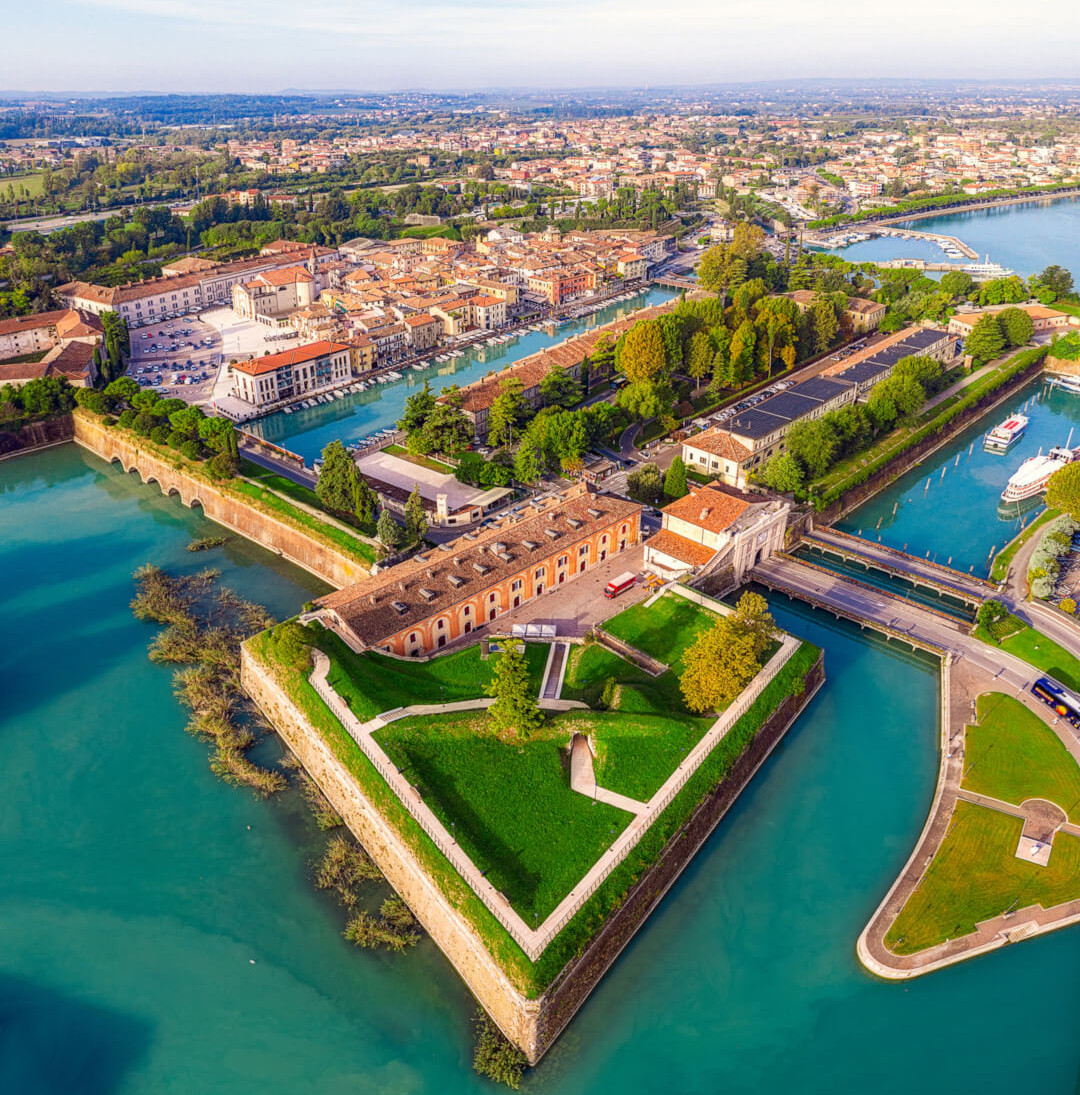
Credits: Franco Lanfredi
The Renaissance in Verona and on Lake Garda was marked by the domination of the Serenissima Republic of Venice. This dominion, which lasted for almost four hundred years, brought stability and security to the territory and a consequent widespread well-being. In this historical era, large noble palaces and new imposing fortifications were built on Lake Garda to counteract the use of new attack and breakthrough tools.
Among the most impressive works that the Venetians created on Lake Garda there is undoubtedly the fortress of Peschiera del Garda. The pentagonal-shaped complex placed in a strategic point for controlling the water basin. They also built the two access gates, Porta Verona and Porta Brescia and the Ponte dei Voltoni that crosses the Canale di Mezzo.
In Verona the Venetians built the monumental doors in Renaissance style and in the same style they made the facade of the Palazzo del Capitano and the Loggia del Consiglio.
Among the Renaissance palaces we mention Palazzo Maffei, Palazzo della Gran Guardia and Palazzo Carlotti. In the territory of the province, however, the fashion of the Venetian villa spread. Villa Mosconi Bertani, Villa Santa Sofia and Villa della Torre, are some examples in Valpolicella; while Villa Guarienti dominates the lake from the magnificent Punta San Vigilio di Garda.
The city of Mantua under the dominion of the Gonzagas became one of the most prestigious capitals of the Italian Renaissance. The Gonzagas were among the main patrons of the time and made Mantua one of the most prominent cities and one of the greatest centers of art.
The family welcomed various prominent intellectuals to his court, who left an indelible imprint on the architecture of the city.
To them we owe the Palazzo Ducale with the famous Camera degli Sposi, the churches of San Sebastiano and Sant’Andrea and Palazzo Te.
Habsburg period
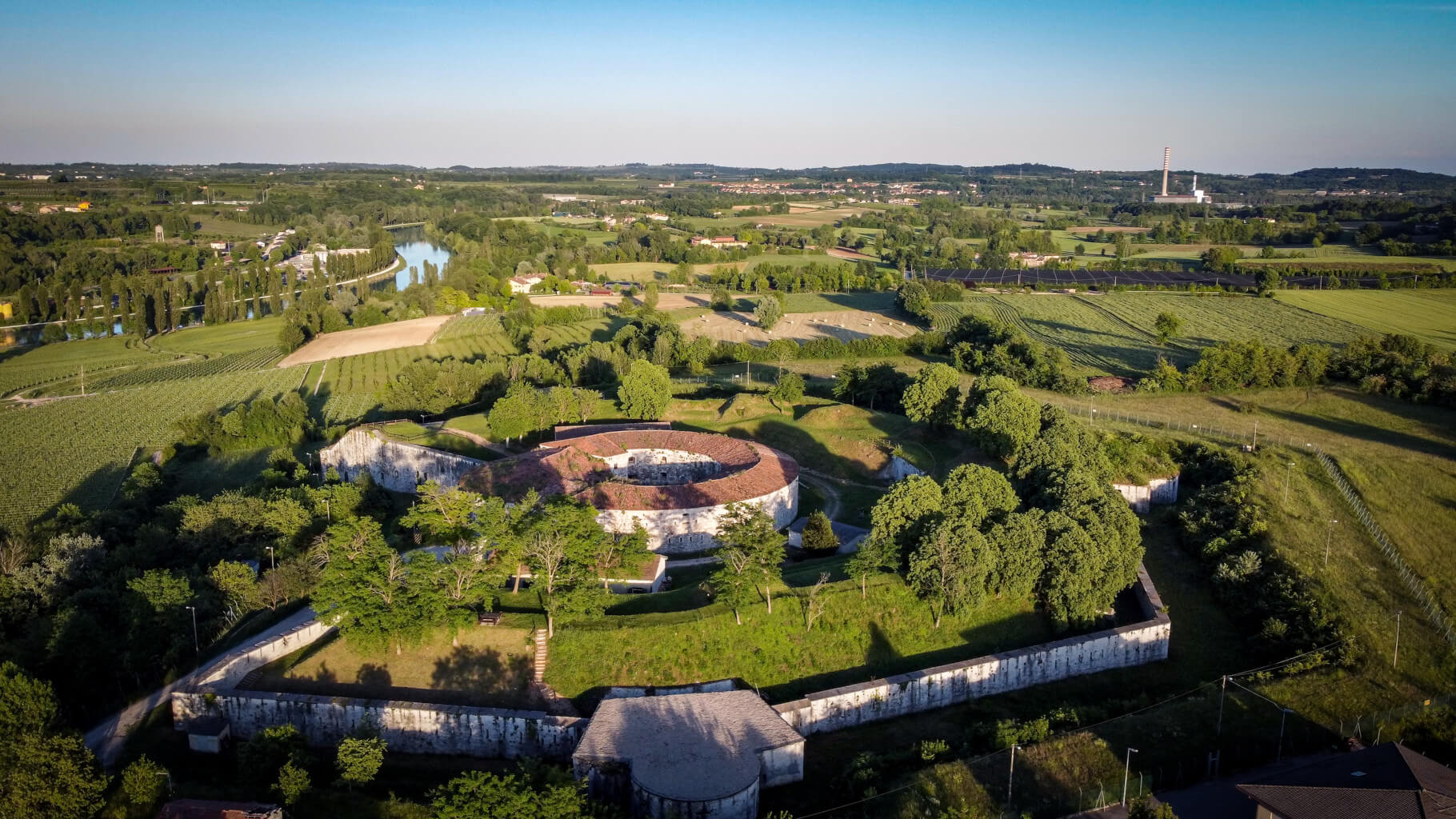
Credits: M. Pavioli
During the period of the Habsburg domination of 1800 in Verona and throughout the surrounding area, great military works were carried out.
In fact, the empire-built walls, bastions, fortresses, barracks and logistical buildings. Visiting these sites allows us to understand the organized and effective military strategy that characterized it.
The city walls, the Austrian military hospital, the Arsenal and the Mastino barracks are still well preserved in Verona. Going up with the funicular you reach Castel San Pietro, converted into a barracks by the Austrians. Ideal place to have complete control of the territory.
Austrian towers and forts are distributed throughout the hilly area of Verona, which is why the area today takes the name of Torricelle. The military fortifications also extend over the entire Garda area, creating a single defensive and territorial control complex. Some of the forts still visible today are: Forte Papa in Peschiera, Forte di Pastrengo, Forte Ardietti in Ponti sul Mincio, Forte di Rivoli, Forte di Riva del Garda.
The Empire also established a "defensive quadrilateral" which connected the fortresses of Peschiera del Garda, Mantua, Legnago and Verona. By controlling the vast territory of the Po Valley and hindering the transit of enemy troops in the area.
The Garda area, in particular Custoza, San Martino and Solferino, were the site of tragic and bloody battles between Italians and Austrians during the wars of independence. In San Martino it is possible to visit the monumental complex built in memory of these Risorgimento battles which preserves clothes, weapons and other war memories.
The Twentieth Century
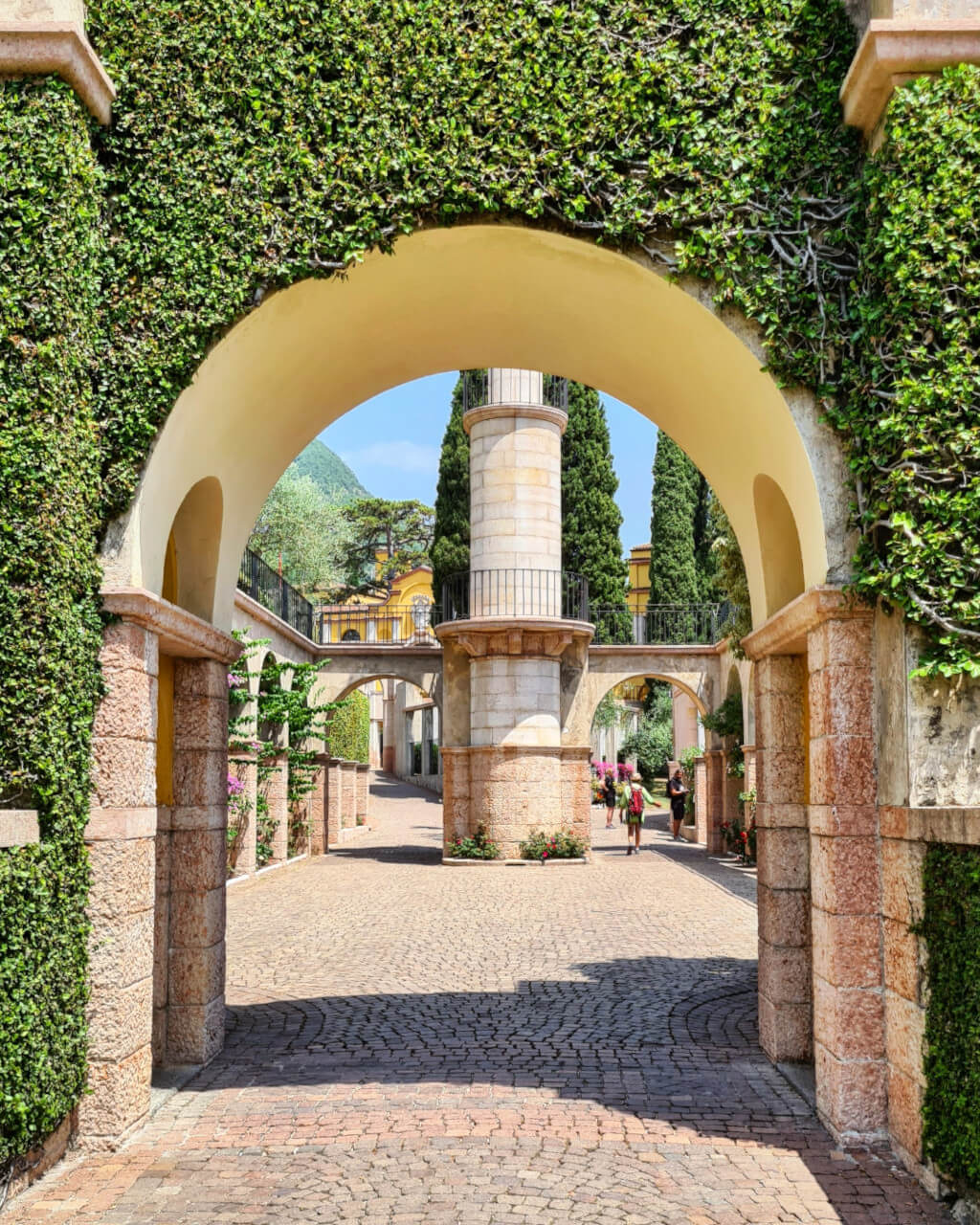
Credits: Maria Bosetti - Maria.santiago18 (IG)
The history and culture of many places to visit on Lake Garda are also linked to the twentieth century.
Many of the structures built by the Habsburg Empire were in fact also used during the Great Wars for military use. A building that played a fundamental role in the fate of the First World War was the Palazzo del Comando in Piazzaforte di Peschiera del Garda. Today known as the "Palazzina Storica", the inter-allied conference was held here in 1917 to decide how to react to the defeat of Caporetto. King Vittorio Emanuele III met with the representatives of Great Britain and France, to analyze the military situation, and study the necessary countermeasures. Inside the Palazzina Storica there is now a museum that collects evidence related to the Great War, from objects and uniforms to original documents.
There are also other museums on Lake Garda that able to give information about this black period of the 20th century. In Salò it is worth visiting MU.SA which tells the history of the town during the period when it was the headquarters of the Ministry of the Italian Social Republic. These offices were housed in Salò by Mussolini in 1943 and because of this, the town became known as the Republic of Salò.
In the northern part of Lake Garda, at the foot of the mountains, there are numerous fortifications and trenches. The various museums and historical sites in this area are part of the Trentino Great War Network. In these museums, we can find objects and images commemorating this period, which has profoundly marked the territory, the population, and the landscape.
Another unmissable place of the 20th century is the Vittoriale degli Italiani of the poet and ex-general Gabriele d'Annunzio. It is a complex in Gardone Riviera of buildings, gardens, fountains, and a beautiful open-air theater. Construction began in 1921 with the help of renowned architect Gian Carlo Maroni. The house-museum was built in memory of the exceptional life of this poet-soldier and his exploits during the First World War.


